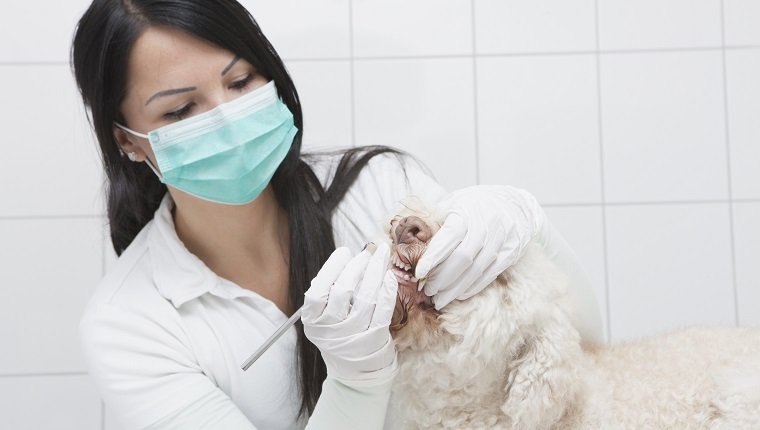Septicemia and bacteremia in dogs happen when a bacterial infection in the bloodstream causes inflammation and illness in the body.
Although the terms are sometimes used to describe the same thing, bacteremia refers to the bloodstream infection, while septicemia, also known as sepsis or blood poisoning, refers to the illness caused by the inflammatory response to the bacterial infection.
Bacteremia is fairly common, but most healthy dogs’ immune systems are able to fight off the infection before symptoms can develop. When the immune system is compromised or unable to fight off the infection, the bacteria proliferates and causes septicemia, which is a serious condition that has around a 50 percent mortality rate in dogs.
If you see the signs of infection in your dog, consult your veterinarian right away so they can form a proper diagnosis and prescribe treatment. Here’s what you should know about the symptoms, causes, and treatments for septicemia and bacteremia in dogs.
Symptoms Of Septicemia And Bacteremia In Dogs

The symptoms of septicemia and bacteremia in dogs can appear suddenly or develop slowly over time. Dogs who fight off the bacterial infection in the blood stream may not show symptoms at all, but dogs who develop septicemia may face life-threatening complications.
The symptoms may vary depending on which organs are affected, and these signs are often confused with symptoms of other immune-regulated diseases.
If you see the following signs of septicemia and bacteremia in your dog, get to your veterinarian right away:
- Diarrhea
- Vomiting
- Dehydration
- Loss of appetite
- Lethargy
- Chills
- Fever
- Tachycardia (rapid heart beat)
- Heart murmur
- Weakness
- Shaking
- Shallow breathing
- Pale gums
- Low blood sugar
- Low blood pressure
- Electrolyte imbalance
- Disorientation
- Septic shock
- Organ failure
Causes Of Septicemia And Bacteremia In Dogs

Septicemia and bactermia in dogs happen when bacteria is introduced to the bloodstream, which occurs very easily. Sometimes this happens during routine dental cleanings, during surgery, or when a dog has an infection that moves from somewhere else in the body into the bloodstream.
Healthy dogs are usually able to fight off the infection, but dogs with compromised immune systems are more at risk for developing septicemia.
Pancreatitis, diabetes, kidney failure, and liver failure are among the conditions that can leave dogs open to infection. Any condition that suppresses the immune system response creates a greater risk.
Skin infections and urinary tract infections may also migrate to the bloodstream and cause septicemia. If your dog has an infection or illness, it’s important to monitor them for signs that this condition may have developed.
Treatments For Septicemia And Bacteremia In Dogs

Treatment for septicemia and bacteremia in dogs often begins with emergency support, as septicemia can easily be fatal. If a dog is in septic shock, they may need hospitalization with intravenous fluids, especially if they’re suffering from dehydration due to vomiting and diarrhea. This will also help restore electrolytes.
Vets may provide broad spectrum antibiotics until they can determine the cause of the infection. Once they identify the infection, they may prescribe more specific, specialized antibiotics.
Vets may give dogs vasopressors that constrict blood vessels to increase blood flow to the organs and restore blood pressure. For dogs who can’t eat or hold down food, they may also insert a feeding tube. If they find an abscess, they may need to remove it surgically.
As a dog recovers, the vet may prescribe a soft food diet to give the digestive system more time to heal. Pet parents should continue to watch for signs of septic shock or other complications, as the mortality rate for this condition is so high.
It will take a few weeks of rest, monitoring, and proper treatment before dogs make a full recovery.
Do you take steps to keep your dog healthy and fight off conditions like bacteremia and septicemia? How do you keep their immune system in good shape? Let us know in the comments below!




